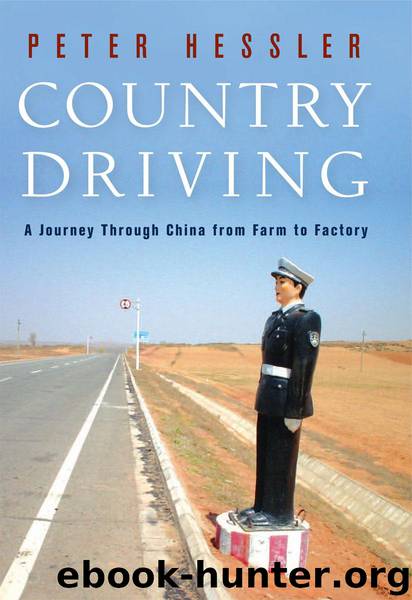Country Driving by Peter Hessler

Author:Peter Hessler
Language: de
Format: mobi, epub
Tags: Travel, Nonfiction
Publisher: 維風
Published: 2010-09-10T22:00:00+00:00
Ming ke ming, fei chang ming….
The Way that can be told of is not an Unvarying Way;
The names that can be named are not unvarying names….
Ever since the nineteenth century, Chinese educators have struggled to find some balance between old and new, native and foreign, and the battle is still being fought in schools like Wei Jia’s. They’ve found ways to include new subject matter, but they haven’t yet reformed the basic learning strategies and classroom structures. Everything still revolves around memorization and repetition, the old cornerstones of Chinese education. Some of this tradition comes from the difficult script, which can be learned only if children copy characters again and again. In Wei Jia’s school, students diligently practiced their calligraphy, and they applied the same learning strategy to other subjects. It worked beautifully for math—those textbooks were far more advanced than the equivalent in an American school.
But other subjects were taught without attention to analysis or creativity. When I heard Wei Jia reciting verses from the Dao De Jing, I asked him what they meant, and he didn’t have the faintest idea. In writing class, he wasn’t encouraged to tell stories or express opinions; instead he copied set phrases and idioms that are part of the Chinese literary tradition. On weekends, he sat for hours on the kang, writing the phrases over and over: “long and thin-thin,” “thick and soft-soft,” “sweet and silky-silky.” When he finally began to work on longer compositions, a typical assignment was: “Write an essay about your lamp.” (One evening I watched Wei Jia struggle with that topic. He wrote: “My lamp is very bright”—and then he stared at the blank page for half an hour.) In geography he never drew a map. Rarely was any subject personalized or contextualized; the world devolved into statistics and numbers and facts. One weekend in third grade, Wei Jia came home after a lesson about the giant carved Buddha statue in the city of Leshan. He knew all the details: Leshan is in Sichuan, the statue is exactly seventy-one meters tall, four children can sit on the big toe. I asked Wei Jia where Sichuan is located.
“Is it in China?” he asked.
“Yes,” I said. “Sichuan is a province. Do you know what a province is?”
He had no idea. I asked him what country Lhasa is in.
“The United States.”
“Where is San Francisco?”
“China.”
His geography text included few maps, and every one was the same: a basic diagram of China. Nothing about provinces or cities, no sections about foreign countries. History lessons were narrowly aimed at proving the greatness of the Communist Party, and the revolutionaries of the past were so exalted that they seemed immortal. When I asked Wei Jia who led today’s country, he answered, “Chairman Mao.” In second grade he joined the Party’s Young Pioneers, like everybody else. The class did everything together, and the emphasis was always on their collective identity. No divisions were made with regard to ability level; there wasn’t such a thing as a reading group or a math group.
Download
This site does not store any files on its server. We only index and link to content provided by other sites. Please contact the content providers to delete copyright contents if any and email us, we'll remove relevant links or contents immediately.
China Rich Girlfriend by Kwan Kevin(3896)
The Silk Roads by Peter Frankopan(3763)
Annapurna by Maurice Herzog(2842)
Hot Thai Kitchen by Pailin Chongchitnant(2813)
Full Circle by Michael Palin(2773)
Okonomiyaki: Japanese Comfort Food by Saito Yoshio(2391)
City of Djinns: a year in Delhi by William Dalrymple(2136)
The Ogre by Doug Scott(2115)
Photographic Guide to the Birds of Indonesia by Strange Morten;(2089)
Tokyo by Rob Goss(2018)
Vietnam, Cambodia, Laos & Northern Thailand by Lonely Planet(2014)
Tokyo Geek's Guide: Manga, Anime, Gaming, Cosplay, Toys, Idols & More - The Ultimate Guide to Japan's Otaku Culture by Simone Gianni(1947)
Discover China Travel Guide by Lonely Planet(1866)
Everest the Cruel Way by Joe Tasker(1827)
China (Lonely Planet, 11th Edition)(1798)
Lonely Planet China(1755)
China Travel Guide by Lonely Planet(1741)
Top 10 Dubai and Abu Dhabi by DK Travel(1717)
Iranian Rappers And Persian Porn by Maslin Jamie(1710)
